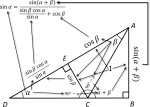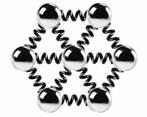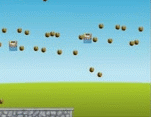
|
Appendix A: For Math Geeks Only
For the math geeks among you, let's prove the identities
cos (α + β) = cos α cos β - sin α sin β, and
sin (α + β) = sin α cos β + cos α sin β
from Chapter 2.
|

|
Appendix B: The Blacke Arte of Program Debugging
Unfortunately we spend much more time teaching programming than we do teaching debugging skills
even though the professional programmer typically spends a large fraction of their time debugging.
That tends to make students think that bugs are things to be ashamed of.
|

|
Appendix C: There are, In Fact, Dumb Questions
I stop answering dumb questions about programming
once my students reach a certain level of programming skill.
Don't let anybody tell you that there's no such thing as a dumb question.
My definition of a dumb question about programming
is a question that can be answered by experimenting with code.
|

|
Appendix D: Bullet Physics
Bullet Physics is a lot more sophisticated than Box2D,
but once you start working with it you will find that they have some concepts in common.
For example, where Box2D has the Physics World b2World, Bullet Physics has the Dynamics World.
|












